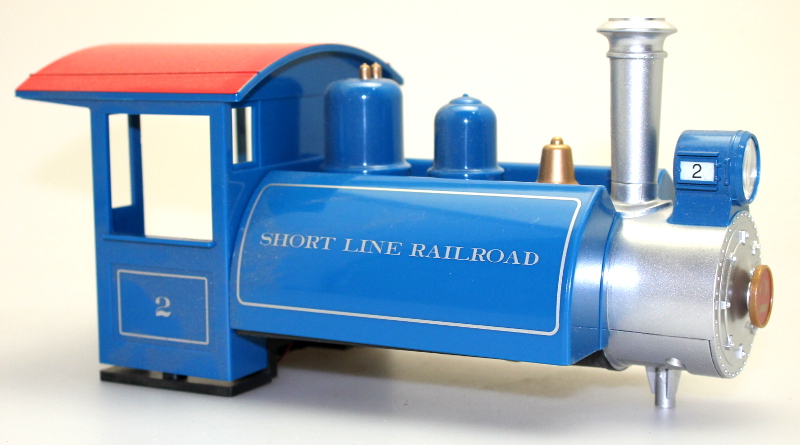Greetings forumgoers, I present a much more recent completion of another colonial-industrial locomotive project for my roster, this time taking one of Bachmann’s Lil Big Hauler 0-4-0s;
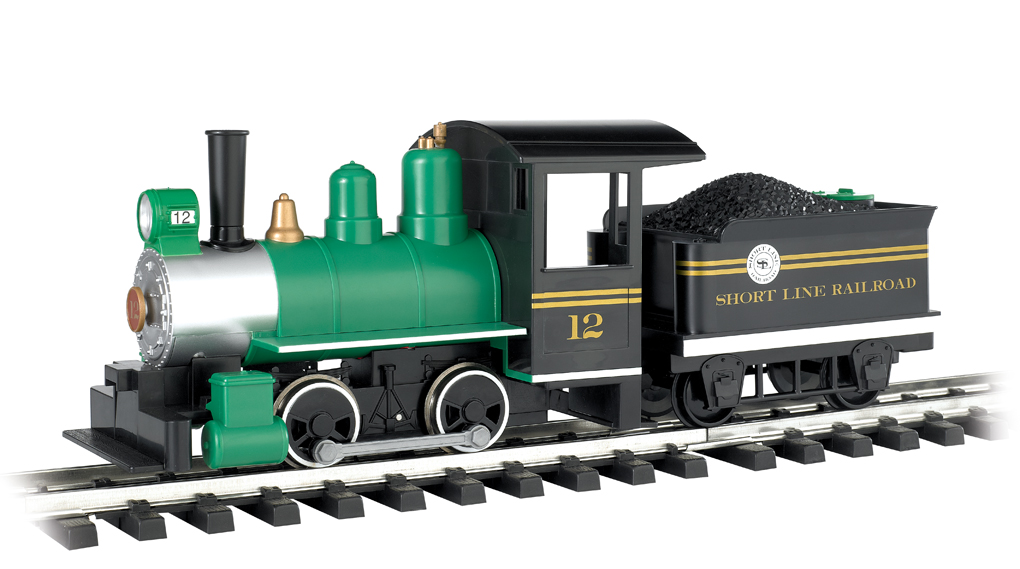
…And turning it into something a bit less bright and shiny.

Starting this project requires stepping back in time a bit, to the time of ongoing work on my Aristo Columbia 2-4-2. The donor of a smaller 2-axle tender for that engine came from this chunky and squat friend, and is the second instance of tender robbing I have done with the LBH series of engines, since their tenders are nice and simple and generic and have the likenesses of real 2-axle tenders that have existed behind prototype motive power on real railways.

The result of such robbery turned a non-tank engine into a solo unit, which necessitated the need for water tanks astride the boiler, which prompted the acquisition of a saddle-tank shell from Bachmann parts.
Putting them together, resulted in this colorful clash.
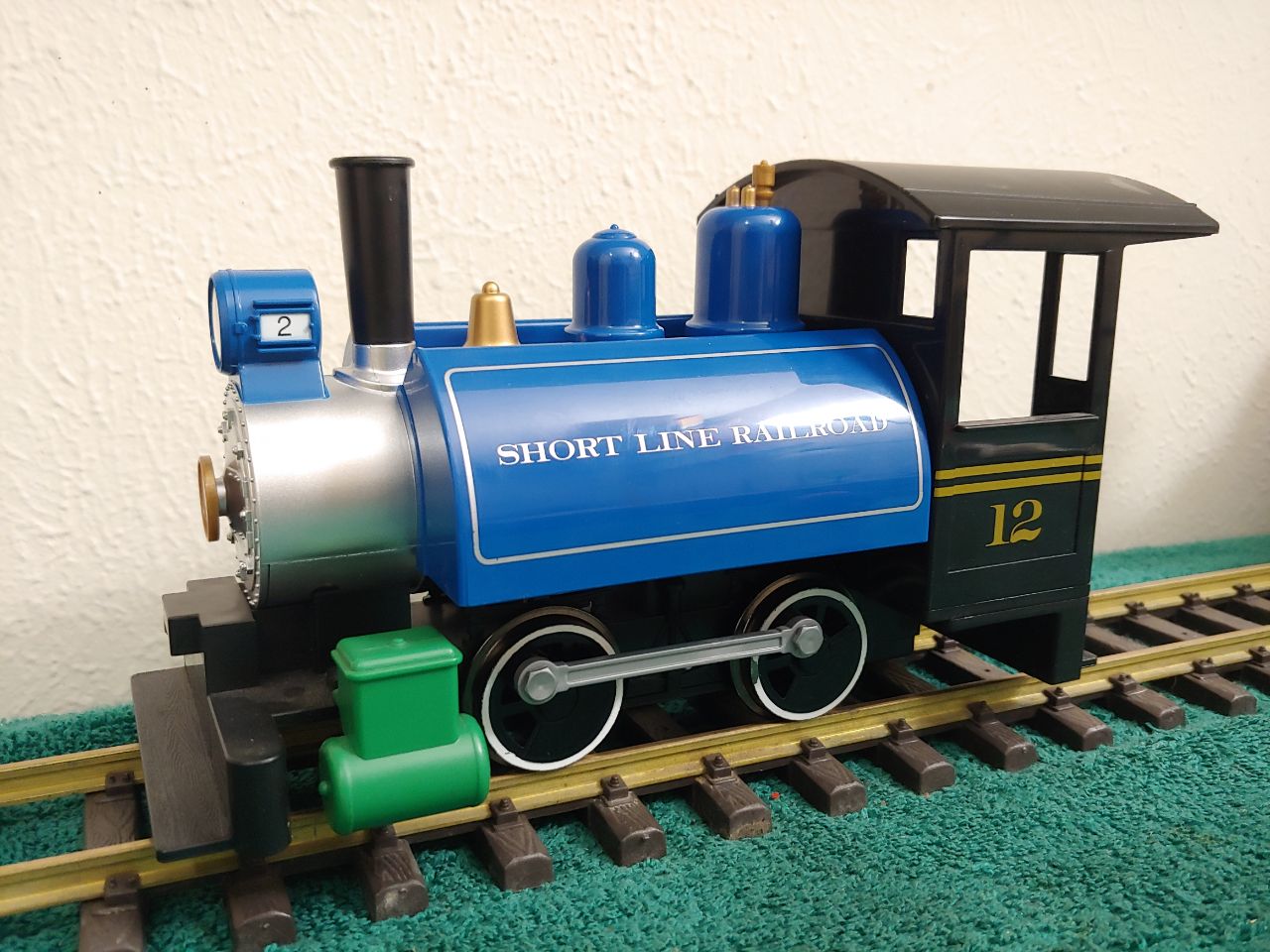
An obvious detail, lack-thereof rather, that has always gotten my attention with these models, is the complete lack of crossheads and connecting rods, done in regards to the original intended market of younger generations. Some have added such linkage parts, but I personally liked the look of what could be an inside-cylinder locomotive, like that of a Bell Locomotive product.
Naturally, the next step was to see how one could emulate inside cylinders. This resulted in the removal of the green cylinders from their original mountings, and chopping them apart for test fittings.
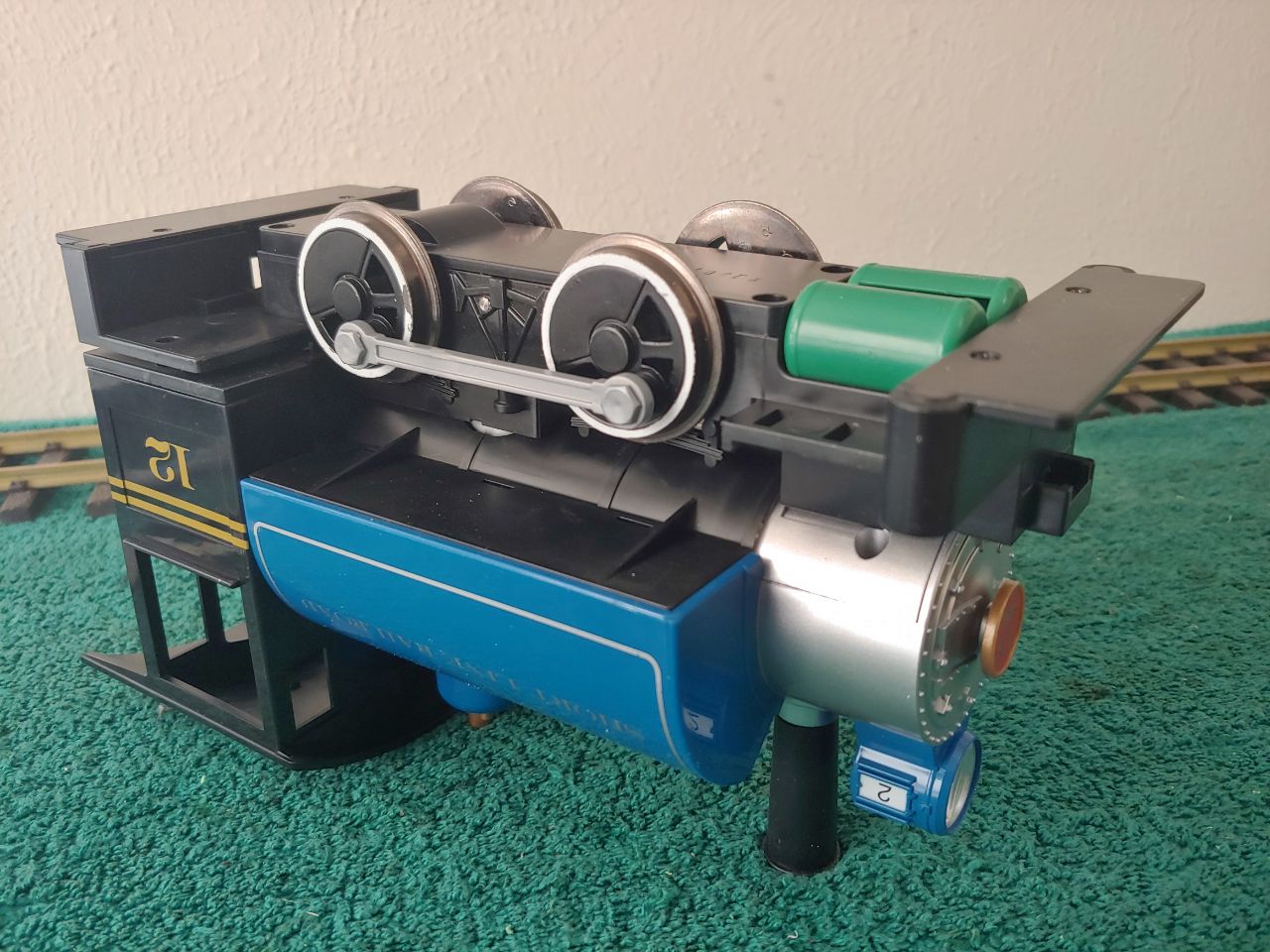
The cylinders fit together beneath the frame, and even have open space between them to allow the long screw between the smokebox and frame to remain for (dis)assembly purposes.

The tops of the cylinders found happy homes on the otherwise blank sides of the cylinder saddle. Coinciding with these fittings was the cutting and mounting of factory-provided lowered coupler mounts front and rear to allow the locomotive to pull normal large scale rolling stock.
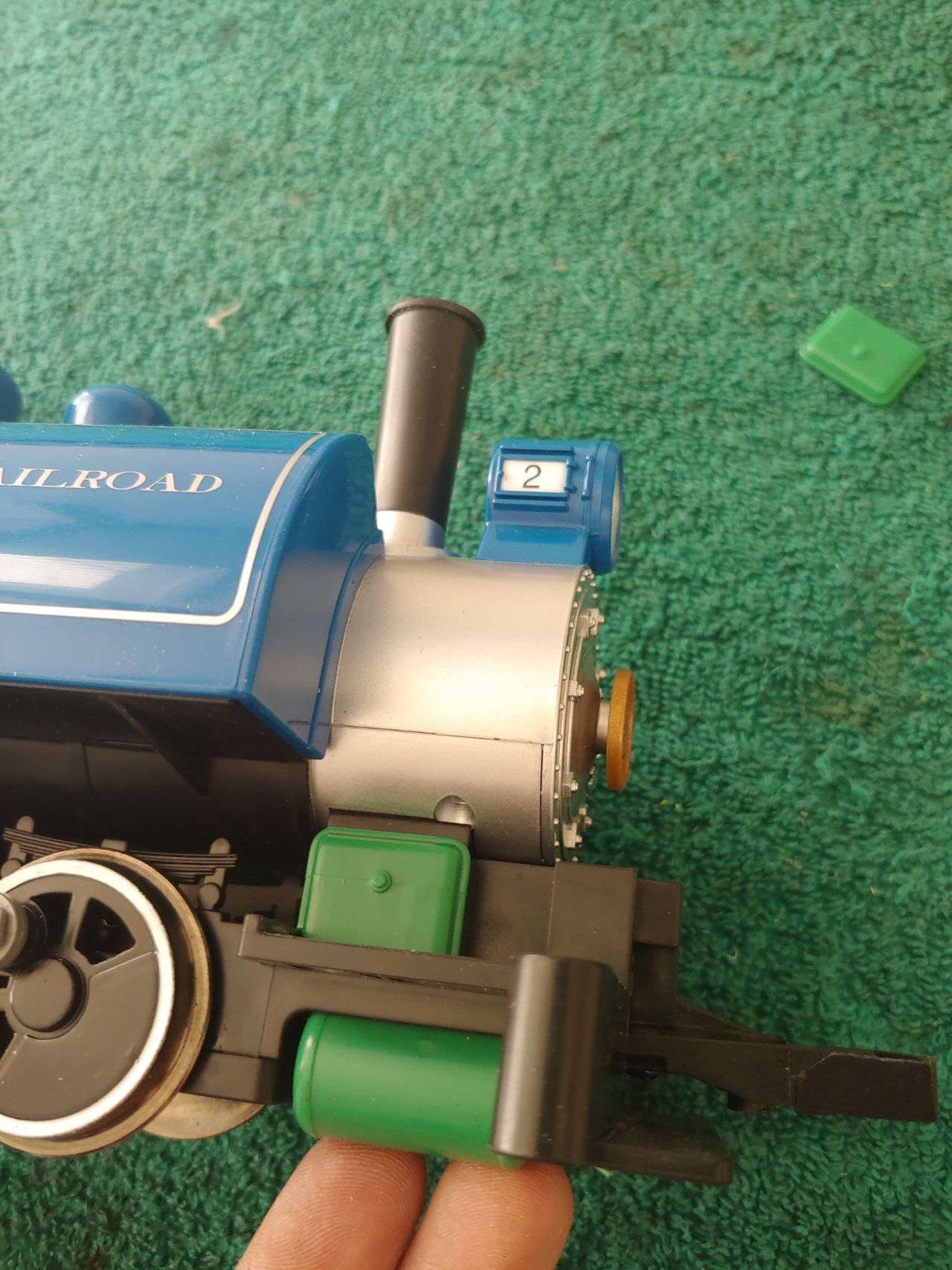
Very little space remains front and rear with the cylinders in among the motor block and pilotbeam, so additional detail work for otherwise unseen crossheads and motion gear was not necessary.
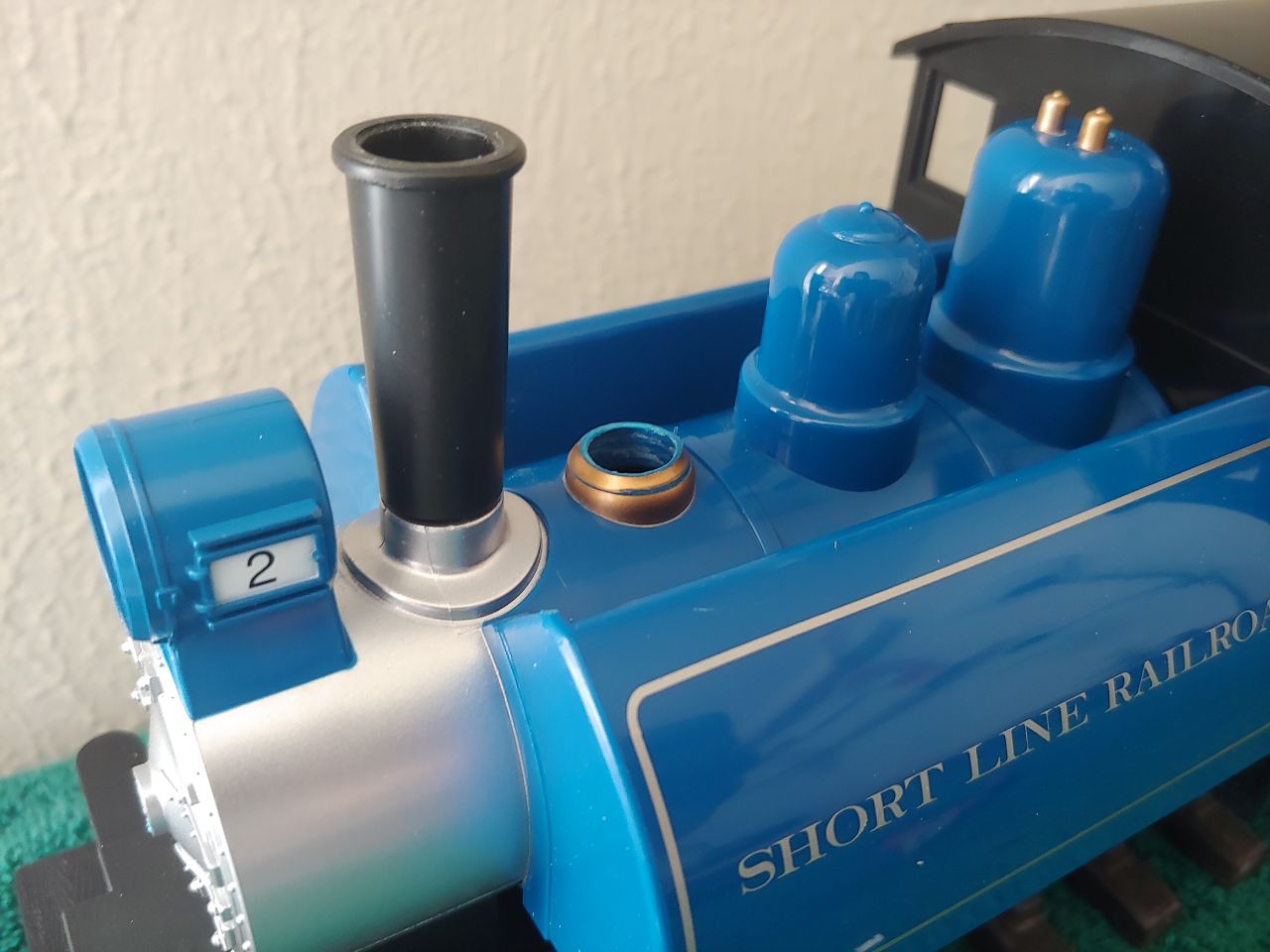
Next on the itinerary was removing the impish plastic bell-thing, as well as the plastic whistle and safety valves, and the front number plate. Then, following the immortal words of someone in the hobby online, I found that these models ARE much improved with coats of flat black paint.

After drying, a spare bell and hangar from a Hartland locomotive was mounted atop a round dome/hatch cap, and affixed to the original bell’s place.

A realization occurred at some point with the saddle-tank shell addition, with there being no obvious means of filling the split tanks with water. This was rectified by the addition of a pair of Ozark tank-car breather valves, which emulate capped filling nozzles. At this same time, an Ozark whistle and safety valves were also added to the steam dome, as well as a later-fitted Ozark #6 number plate done in my ambiguous-builder silver and black style.
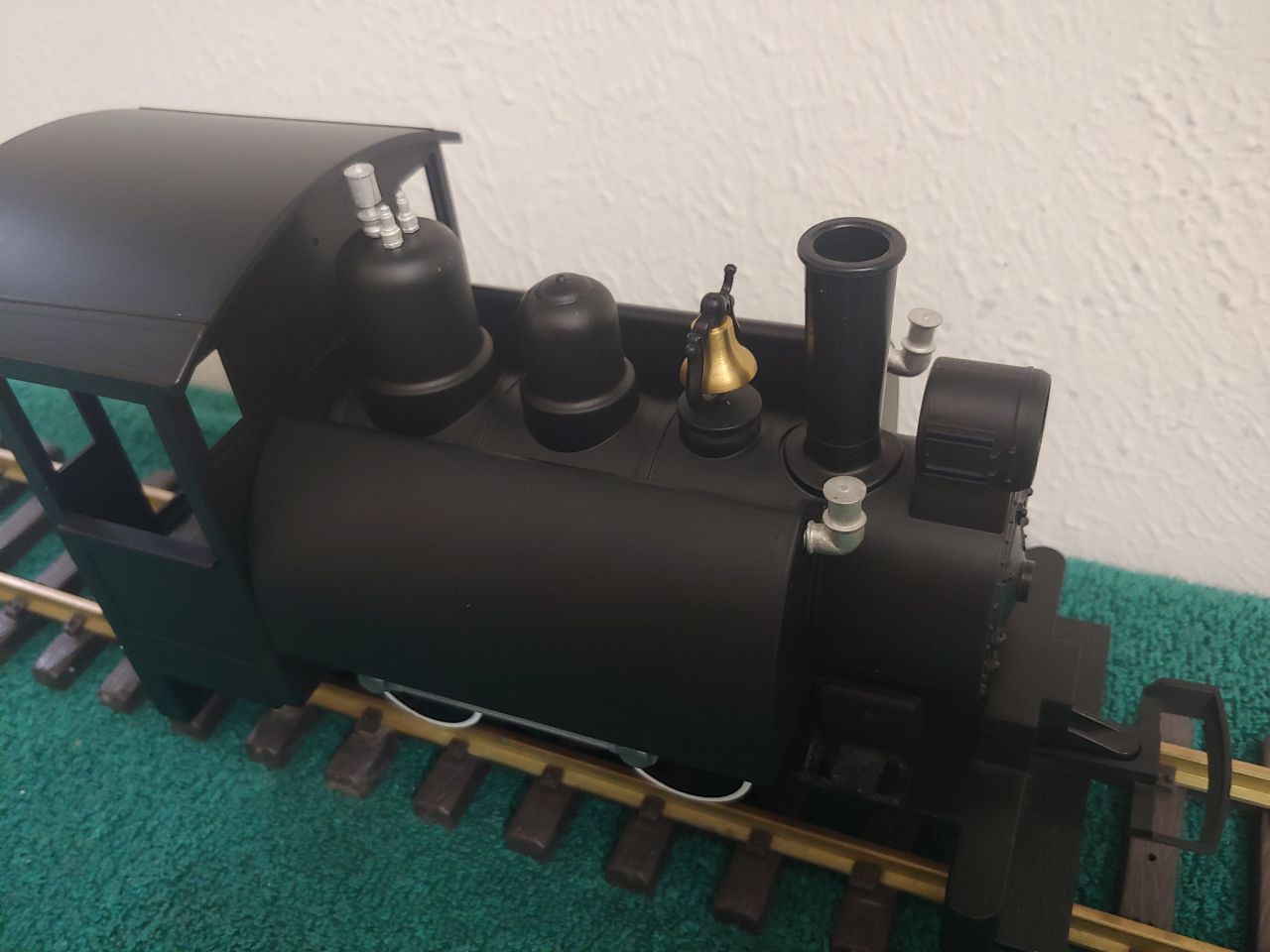

With the water supply rectified, next up was fuel, in the form of a coal bunker fitted into the fireman’s side of the cab. This was built with flat and thick wood bits, and press-fits into the cab, while sitting around the cast knob for the cab’s mounting screw.

A slathering of paint later, real coal bits were glued atop it, and the bunker was fitting in place in the cab.

The addition of the narrow bunker also provided a home for a pair of small Ozark coal shovels that had yet to end up on any locomotive for quite some time. These little fellows would be easier to manipulate within the little cab space and fit within the bunker’s width.

After fitting and gluing parts, the next step was weathering. Considering this is an almost-entirely black locomotive and I am not very fond of heavy rust, I wanted to keep the dirtiness limited to water streaks, soot, and track/industrial dust. Plus some lubricant and grease for good measure.
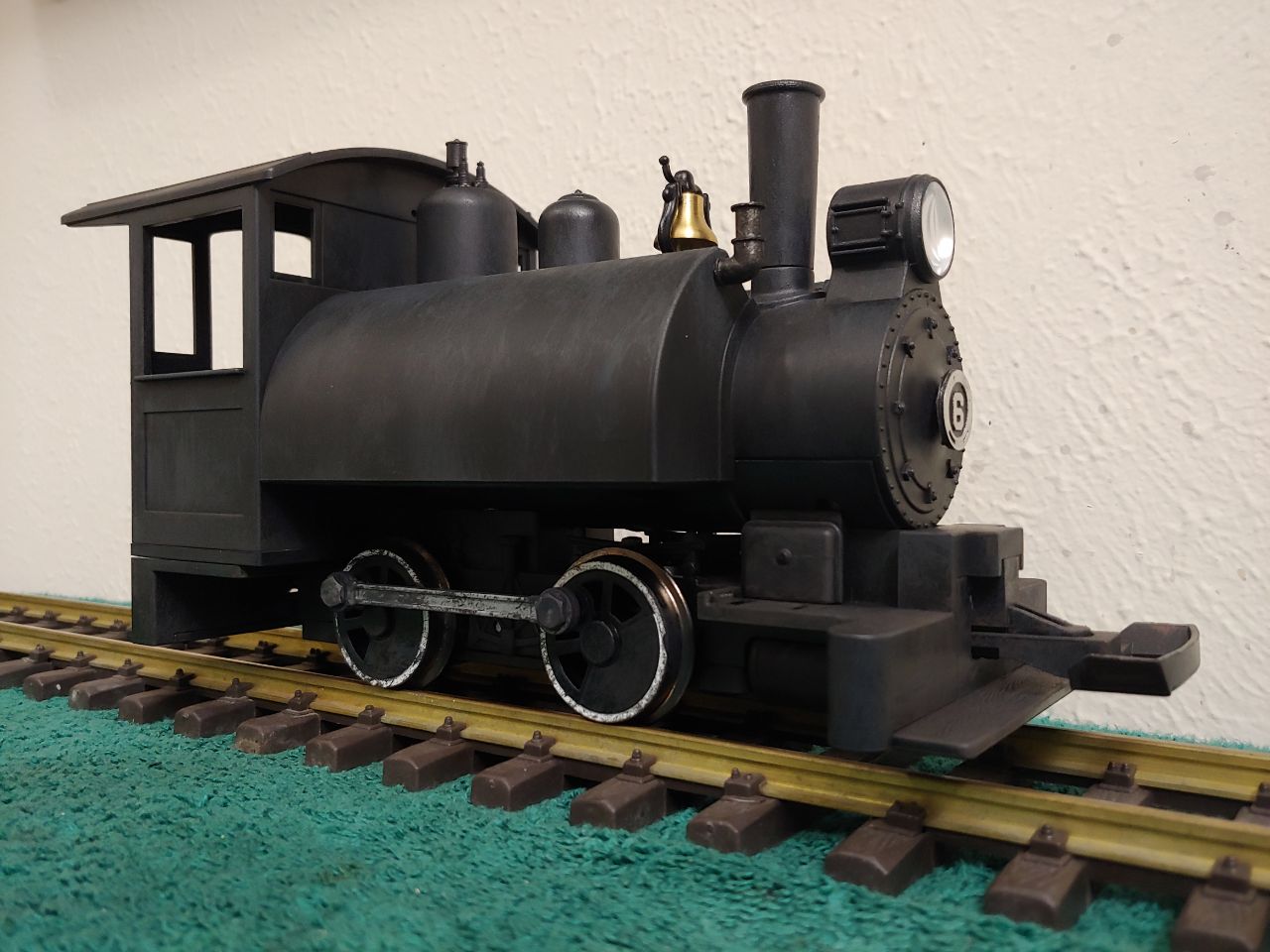
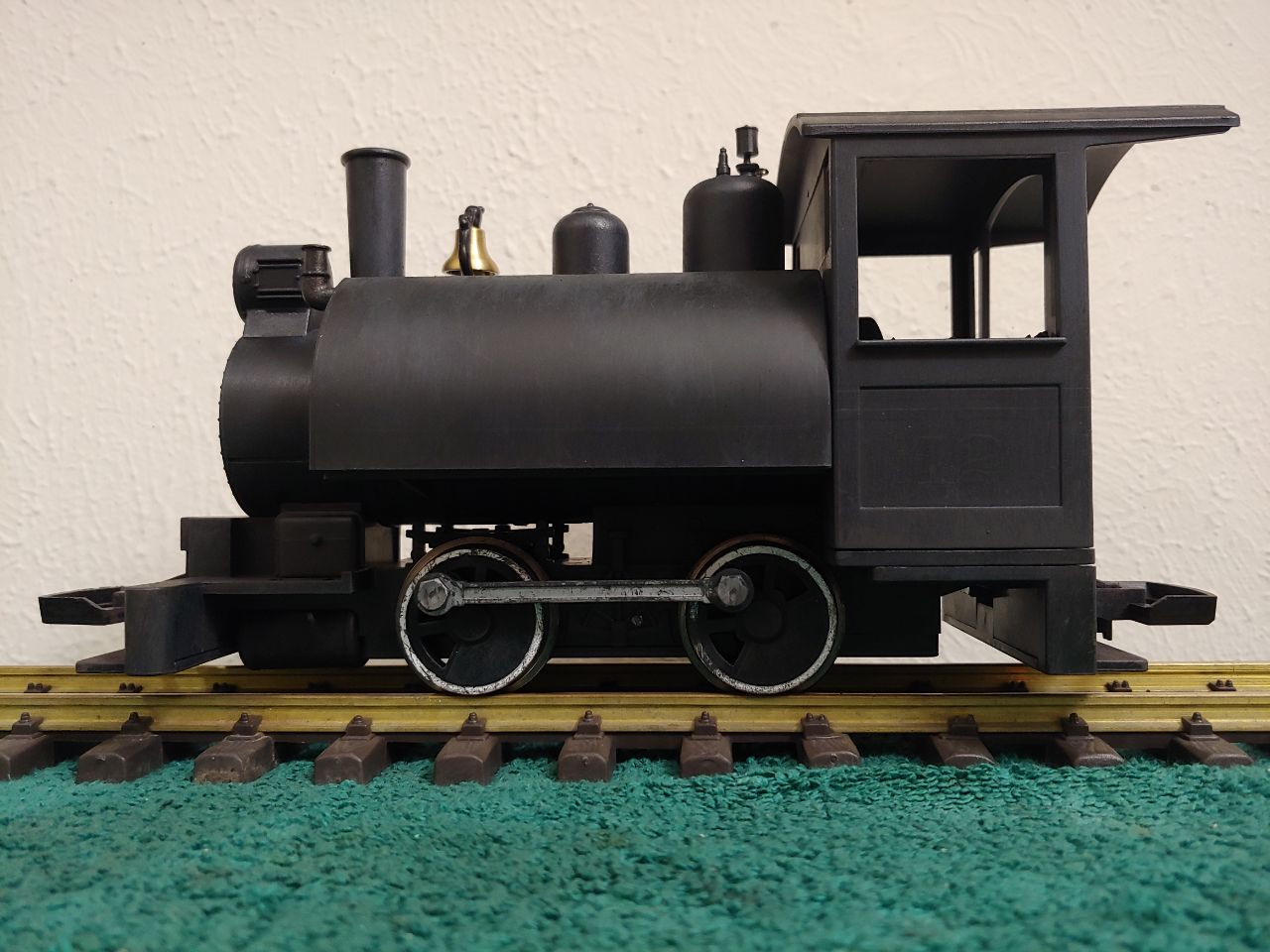
With paintwork done and the model largely complete, test running was done to observe the locomotive’s operational performance.

…Which promptly revealed the need for additional weight.
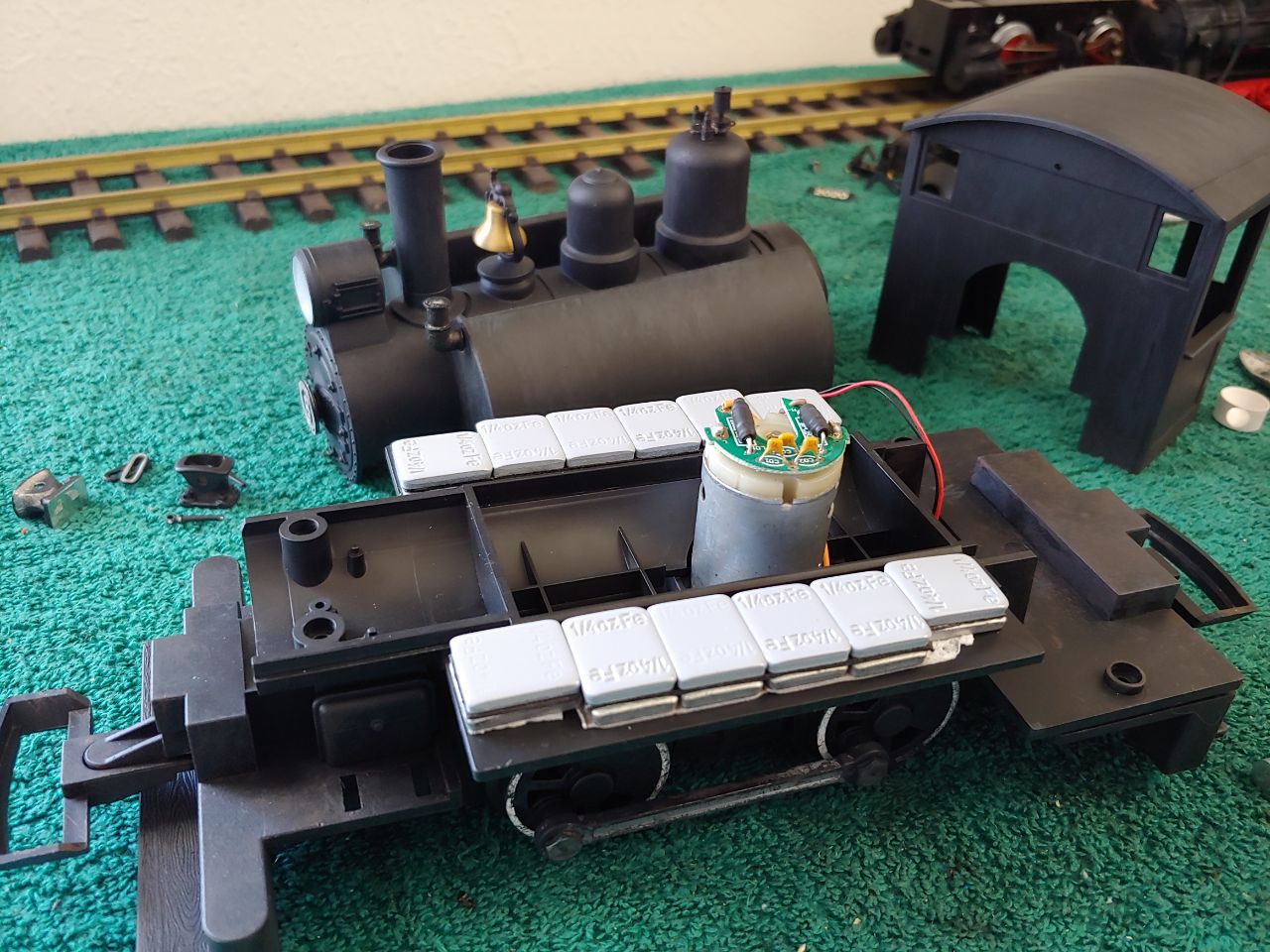
24 of 36 quarter-ounce tire weights are seen here, arranged to fit within the saddle tank shell. Nine total ounces of metal directly over the drivers do quite a lot for this little beastie, greatly improving its pulling power and tractive effort.
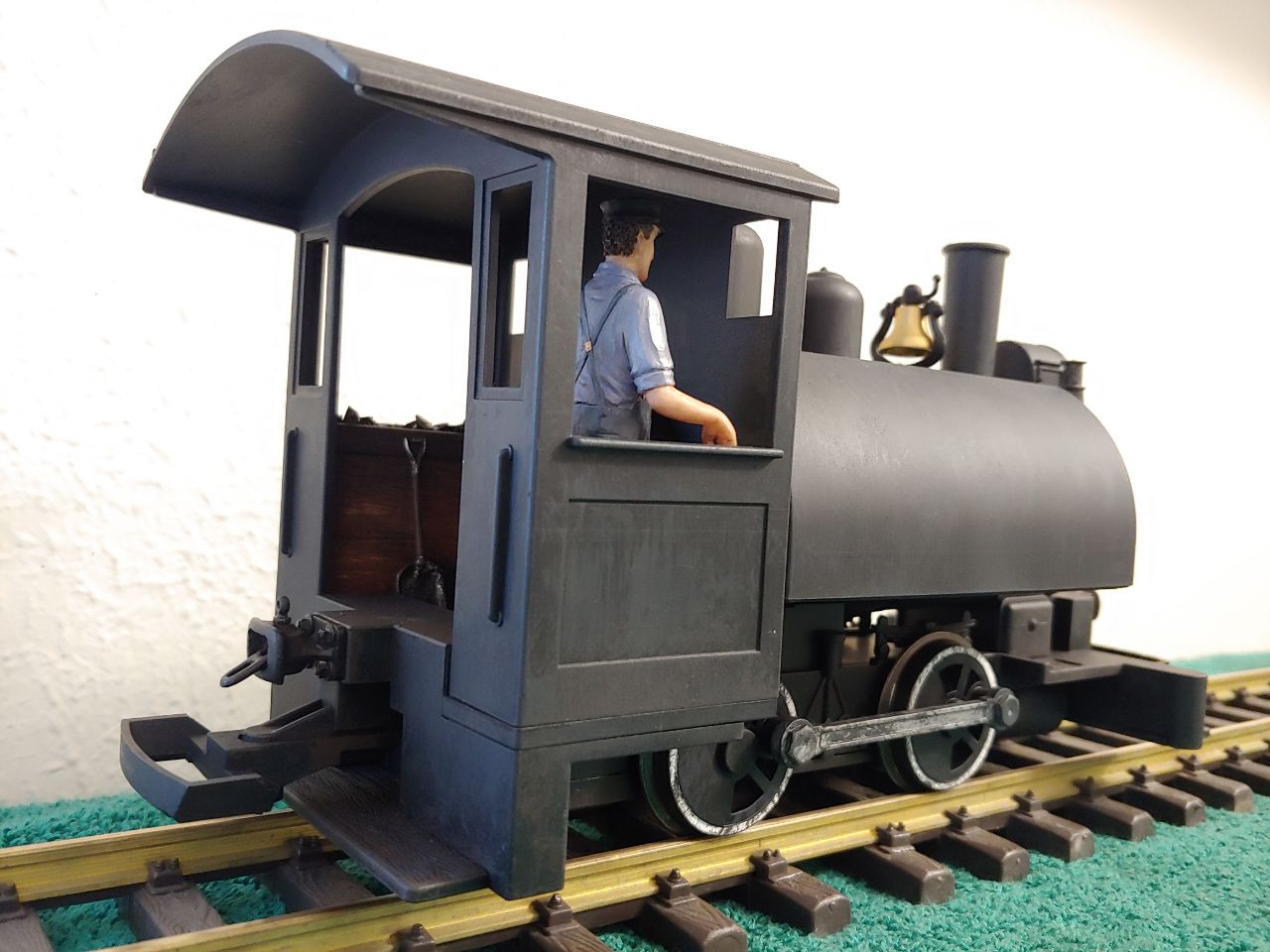
After reassembly and testing, the paint and weathering was sealed with Krylon Matte finish, Ozark link and pin couplers were added, as well as one of six Scenecraft (Bachmann/British) crew figures. This finely detailed English fellow now mans the cab of this squat tank engine alone.

The end result of all this modeling mayhem, is a little black inside-cylinder locomotive, perhaps of Vulcan or Bell or some other American builder origin, ready for switching and shunting work, looking much prouder than its brightly-colored origins.
Best,
~Nick
